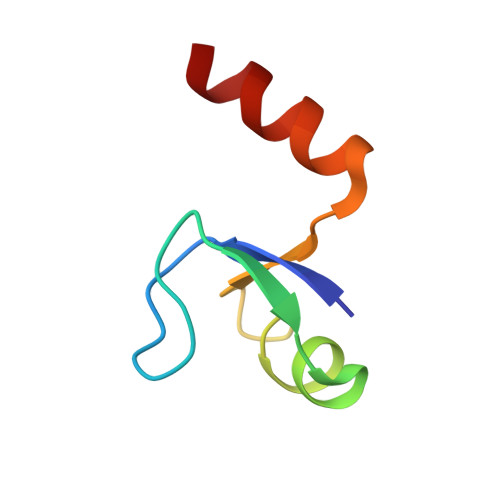Energetically significant networks of coupled interactions within an unfolded protein.
Cho, J.H., Meng, W., Sato, S., Kim, E.Y., Schindelin, H., Raleigh, D.P.(2014) Proc Natl Acad Sci U S A 111: 12079-12084
- PubMed: 25099351
- DOI: https://doi.org/10.1073/pnas.1402054111
- Primary Citation of Related Structures:
2HBA, 2HBB - PubMed Abstract:
Unfolded and partially unfolded proteins participate in a wide range of biological processes from pathological aggregation to the regulation of normal cellular activity. Unfolded states can be populated under strongly denaturing conditions, but the ensemble which is relevant for folding, stability, and aggregation is that populated under physiological conditions. Characterization of nonnative states is critical for the understanding of these processes, yet comparatively little is known about their energetics and their structural propensities under native conditions. The standard view is that energetically significant coupled interactions involving multiple residues are generally not present in the denatured state ensemble (DSE) or in intrinsically disordered proteins. Using the N-terminal domain of the ribosomal protein L9, a small α-β protein, as an experimental model system, we demonstrate that networks of energetically significant, coupled interactions can form in the DSE of globular proteins, and can involve residues that are distant in sequence and spatially well separated in the native structure. X-ray crystallography, NMR, dynamics studies, native state pKa measurements, and thermodynamic analysis of more than 25 mutants demonstrate that residues are energetically coupled in the DSE. Altering these interactions by mutation affects the stability of the domain. Mutations that alter the energetics of the DSE can impact the analysis of cooperativity and folding, and may play a role in determining the propensity to aggregate.
Organizational Affiliation:
Department of Biochemistry and Biophysics, Texas A&M University, College Station, TX 77843-2128;

















